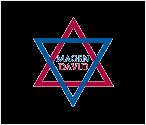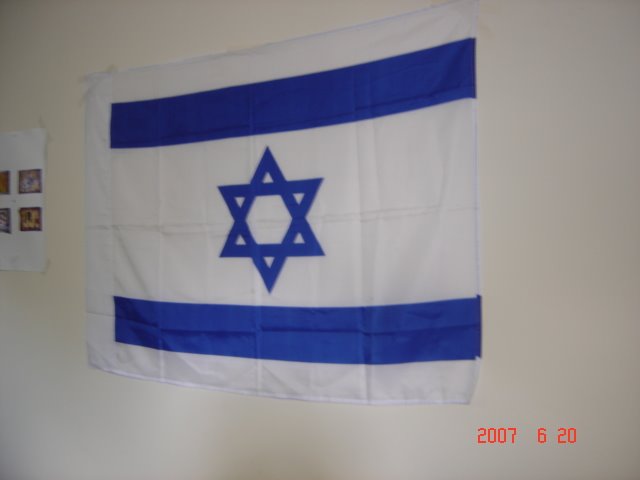Reuven Shefigal escreveuàs 4:21 de 19 de Fevereiro de 2010
In this weeks Parsha Bnei Yisrael are called upon to contribute to the building of the Mishkan. Each individual is to give according to his heart's inclinations, to be as generous or frugile as one sees fit. Alongside this donation, is the required, sort of tax, that each mature man must give, the half-shekel, which was used for the foundational sockets of the Mishkan. This was a set sum which could not be added to or detracted from, regardless of one's ability or desire.
The mutual obligation clearly represents the principle of equality opposite each other, as a nation, unity of purpose, and before Hashem, the national concensus to accept His Reign and the standing before Him as an individual.
The Rambam, as explained by Rav Elimelech from Lazynsk, took this to an additional realm. The half-shekel also indicates that no one is complete without his mutual and common binding to the whole, and there is shared responsibility between us. Each person should see himself as able to tip the balance, the scale of judgement, with every action, thought and spoken word.
If we could train ourselves to take this thought abit farther, it would change our lives. A person should look at himself as if he\she stands exactly at the even point as regards one's merits and demerits. Such, one would understand that one's next act will tip the scale to here or there. Life or Death, Reward or Punishment, Good or Bad. One shoud look at the community that way and at the nation, and at the world civilisation too, as being dependent solely and exclusively, on his/her personal choice at this very moment.
Reaching this point seems unattainable on a practical level? However, cognitively we can build a ladder that will take us there. The Mishkan represents this concept and parallels the birth of the Nation of Israel. The Bnei Yisrael used the Mishkan in the desert and eventually it reached Shilo, after conquering a large part of Eretz Yisrael, The Promised Land, where it stood an additional 369 years, and was replaced by the Bet Hamikdash in Yerushalayim. In Shilo the Mishkan received a stone base, yet the roof was of the original Mishkan. The Bet Hamikdash was built by King Solomon with a permanent foundation and roof.
The maturing of Bnei Yisrael parallels the Temple they had at any given time in their development. And as we explained, there really is no ignoring one's personal part in the whole. In the desert, we are like children, being cared and nutured by Hashem. There is Mon, clouds of glory, etc., and when we reach the taking up of arms to conquer the land, we are like young mature men, with a stron root and foundation, just as the Mishkan in Shilo. When we become grown, tested and experienced men we have a Bet Mikdash. If we remove the yoke of Torah, we risk losing all, as has happened to our great people twice.
The Third and final Temple is waiting for our mutual commitment. May it be Hashem's will to bring about our personal and collective redemption and geula, speedily in these forthcoming days.
The mutual obligation clearly represents the principle of equality opposite each other, as a nation, unity of purpose, and before Hashem, the national concensus to accept His Reign and the standing before Him as an individual.
The Rambam, as explained by Rav Elimelech from Lazynsk, took this to an additional realm. The half-shekel also indicates that no one is complete without his mutual and common binding to the whole, and there is shared responsibility between us. Each person should see himself as able to tip the balance, the scale of judgement, with every action, thought and spoken word.
If we could train ourselves to take this thought abit farther, it would change our lives. A person should look at himself as if he\she stands exactly at the even point as regards one's merits and demerits. Such, one would understand that one's next act will tip the scale to here or there. Life or Death, Reward or Punishment, Good or Bad. One shoud look at the community that way and at the nation, and at the world civilisation too, as being dependent solely and exclusively, on his/her personal choice at this very moment.
Reaching this point seems unattainable on a practical level? However, cognitively we can build a ladder that will take us there. The Mishkan represents this concept and parallels the birth of the Nation of Israel. The Bnei Yisrael used the Mishkan in the desert and eventually it reached Shilo, after conquering a large part of Eretz Yisrael, The Promised Land, where it stood an additional 369 years, and was replaced by the Bet Hamikdash in Yerushalayim. In Shilo the Mishkan received a stone base, yet the roof was of the original Mishkan. The Bet Hamikdash was built by King Solomon with a permanent foundation and roof.
The maturing of Bnei Yisrael parallels the Temple they had at any given time in their development. And as we explained, there really is no ignoring one's personal part in the whole. In the desert, we are like children, being cared and nutured by Hashem. There is Mon, clouds of glory, etc., and when we reach the taking up of arms to conquer the land, we are like young mature men, with a stron root and foundation, just as the Mishkan in Shilo. When we become grown, tested and experienced men we have a Bet Mikdash. If we remove the yoke of Torah, we risk losing all, as has happened to our great people twice.
The Third and final Temple is waiting for our mutual commitment. May it be Hashem's will to bring about our personal and collective redemption and geula, speedily in these forthcoming days.




